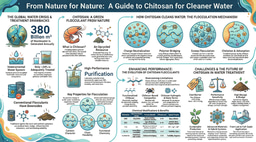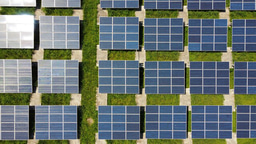Microbes hold the key to explain soil carbon losses under climate warming
Published in Earth & Environment and Microbiology

Accurately estimating soil carbon (C) losses to the atmosphere through the responses of soil microbial respiration to warming is crucial for understanding the impacts of climate change on soil carbon stocks and climate regulation in both present and future scenarios. We know that microbes are critical drivers of global carbon cycling. For example, we know that soil respiration releases approximately five times more CO2 than anthropogenic emissions annually. However, we still lack a unified understanding of the sensitivity of soil microbial respiration to warming (Q10), causing a major source of uncertainty in projecting the magnitude of the land C-climate feedback.
One of the major issues when trying to understand the fate of the sensitivity of soil microbial respiration to warming is that most studies explore the importance of single factors in isolation and local regions. This has created important uncertainties about the major drivers of Q10 patterns across ecosystems. To address this knowledge gap, we conducted a global soil survey from 332 sites in 29 countries across environmental gradients (climatic conditions, vegetation types, and soil properties). To simultaneously evaluate the contribution of fundamental abiotic and biotic factors that explain Q10 values derived from a laboratory warming experiment, we conducted data on biochemical recalcitrance (low-quality and labile substrates), mineral protection (unprotected soil organic matter is assumed to be a readily available C source for microbes), soil C content (substrate), soil microbiome (e.g., microbial biomass, richness, and community composition of bacteria, fungi, and protists), and environmental factors (e.g., soil pH and fine texture).
.jpg)
Sierra Nevada (Spain). A photo from Ana López Velasco.
Our study indicated that, compared with biochemical recalcitrance, mineral protection, substrate quantity, and environmental factors, the soil microbiome explained the largest portion of the variation in Q10 values. In other words, microbes are essential to explain the future of microbial-driven carbon losses to the atmosphere in the context of climate warming. Moreover, soil microbial biomass and key bacterial taxa were the most important factors in determining the observed global patterns of Q10. In this context, we identified that although C mineralization is a generalist function performed by most microbial groups, its temperature sensitivity will be controlled by a reduced number of taxa. Finally, we noted strong links between microbial biomass, bacterial taxa, and substrate quantity with soil Q10, suggesting marked accelerated C losses under a warming scenario in C-rich soils of cold regions from the Northern Hemisphere.

coauthor of the article.
Together, our work provides solid evidence that soil microbiomes largely govern the responses of soil heterotrophic respiration to warming. This investigation has allowed a direct comparison between multiple Q10 drivers at a global scale (i.e., soil samples were analyzed using the same method), highlighting the incalculable value of the soil microbiome over other factors. Although the soil microbial communities are microscopic, they have planetary-scale impacts. We need to monitor and conserve the soil microbiome globally to control soil C losses with warming.
Follow the Topic
-
Nature Climate Change

A monthly journal dedicated to publishing the most significant and cutting-edge research on the nature, underlying causes or impacts of global climate change and its implications for the economy, policy and the world at large.



Please sign in or register for FREE
If you are a registered user on Research Communities by Springer Nature, please sign in